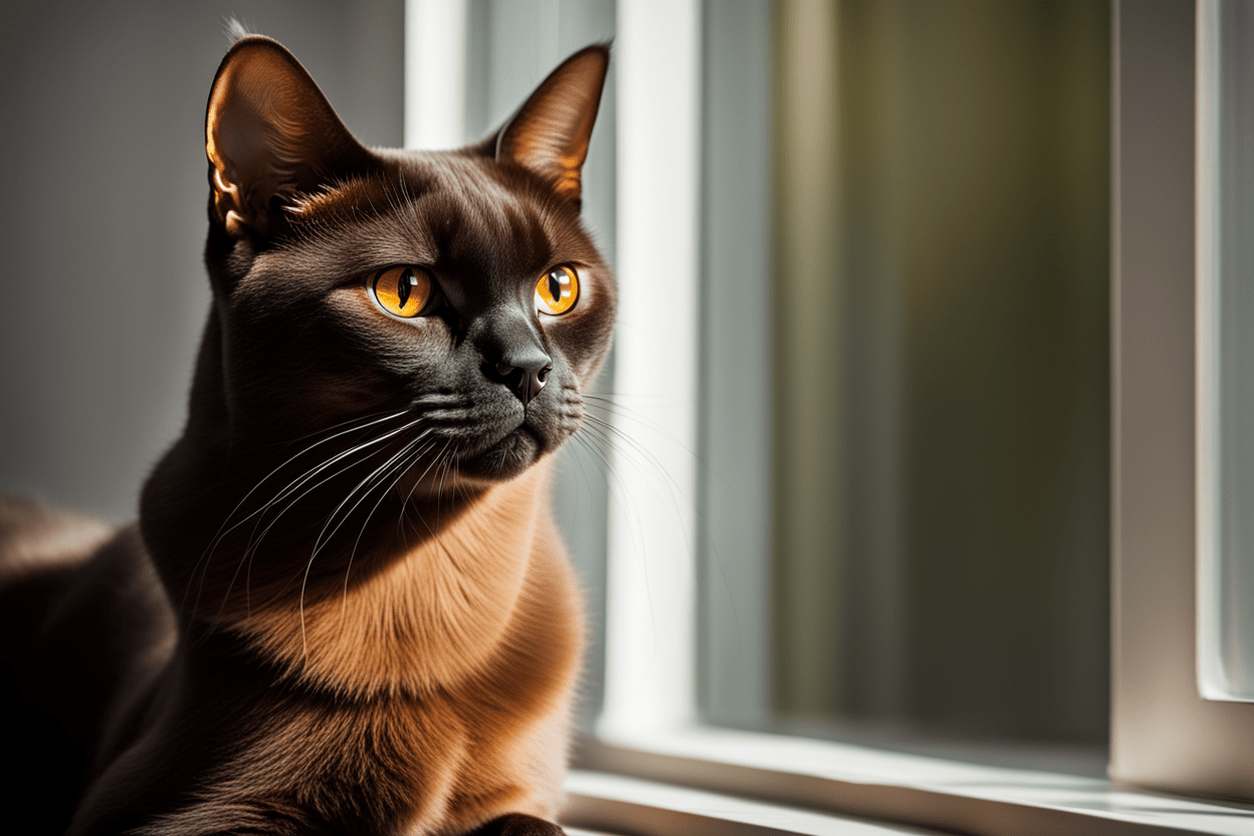Introduction
The Burmese cat is a beloved breed, known for its playful demeanor and stunning looks. Originating from Burma (now Myanmar), these cats have charmed their way into many homes. They’re cherished for their affectionate personalities and striking features.
History and Origin
The Burmese cat traces its roots back to Southeast Asia, with a significant foundation in Burma. The breed’s history became prominent in the 1930s when a female cat named Wong Mau was brought to America. Wong Mau is pivotal as she became the progenitor of the modern Burmese breed. Through selective breeding, these cats gained recognition for their unique characteristics. The Cat Fanciers’ Association (CFA) officially recognized the breed in 1936, further solidifying its status.
Physical Characteristics
Size and Weight: Burmese cats often fall into the medium size category, weighing between 8 to 12 pounds.
Coat Type and Colors: Their coat is one of their most distinguished features—short, shiny, and exceptionally smooth. The breed showcases various colors, with sable being the most iconic. Other colors include champagne, blue, and platinum.
Distinctive Features: A Burmese cat stands out due to its rounded head, large expressive eyes (usually golden or amber), and an elegant, muscular body.
Personality and Temperament
General Personality Traits: These cats are known for their affectionate and sociable nature. They thrive on human interaction and often display dog-like loyalty.
Behavior Around Humans and Other Animals: Burmese cats are typically friendly and make excellent companions for families. They get along well with children and other pets.
Activity Level and Playfulness: They’re highly playful and energetic, often engaging in interactive play. Toys that challenge their intelligence are particularly appreciated.
Intelligence and Trainability: Their smart and curious nature makes them fairly easy to train. They can learn simple tricks and commands, enhancing their bond with their owners.
Health and Lifespan
Common Health Issues and Genetic Disorders: While generally healthy, they can be prone to conditions like gingivitis and feline infectious peritonitis. Another concern is congenital hypokalemia, which affects muscle function but can be managed with proper care.
Lifespan: A well-cared-for Burmese cat typically lives between 12 to 16 years.
Preventive Care and Regular Health Checks: Regular vet check-ups are crucial. Vaccinations, dental care, and a balanced diet help maintain their health.
Grooming and Maintenance
Grooming Needs: The maintenance of their sleek coat is minimal, requiring only weekly brushing to remove loose hair and maintain shine.
Nail Trimming, Ear Cleaning, and Dental Care: Trim nails biweekly, clean ears regularly, and ensure dental hygiene with annual veterinary cleanings and appropriate dental treats.
Diet and Nutrition Requirements: A high-quality, protein-rich diet is essential. Opt for food suited for their age, medical condition, and activity level.
Living Environment
Suitability for Different Types of Living Spaces: Burmese cats adapt well to various living environments, whether an apartment or a house. They appreciate spaces where they can climb and explore.
Indoor vs. Outdoor Considerations: These cats are best kept indoors to protect them from outdoor hazards. Providing a safe, stimulating indoor environment satisfies their curiosity.
Space and Activity Needs: While not requiring vast space, they need areas where they can play, climb, and perch.
Interaction with Family and Children
Compatibility with Children: Their gentle and playful nature makes them great with children. They tolerate handling and enjoy interactive play.
Interaction with Other Pets: Burmese cats coexist well with other pets, provided proper introductions are made.
Ideal Family Type for the Breed: Suitable for various family setups, they thrive in homes where they receive plenty of attention and affection.
Adoption and Breeder Information
Tips for Finding Reputable Breeders: Look for breeders who provide health guarantees and are registered with recognized cat associations. Visiting the breeding facility ensures conditions meet humane standards.
Adoption Considerations and Processes: Rescuing a Burmese cat can be rewarding. Check local shelters and breed-specific rescues for available cats.
Cost of Purchasing or Adopting the Breed: Expect to pay between $600 to $1,000 from a breeder. Adoption fees are generally lower, ranging from $75 to $150.
Fun Facts and Trivia
- Burmese cats are known to “talk” to their owners with a distinctive, soft voice.
- They are sometimes referred to as “velcro cats” due to their penchant for sticking close to their humans.
- The breed has produced several famous feline actors in TV and film.
Frequently Asked Questions (FAQs)
How much should I expect to pay for a Burmese cat?
A Burmese cat from a reputable breeder costs between $600 to $1,000.
What is the typical lifespan of a Burmese cat?
They usually live between 12 to 16 years with proper care.
Are Burmese cats good with children?
Yes, they are gentle, playful, and tolerate handling well, making them excellent companions for children.
Do Burmese cats get along with other pets?
Generally, they coexist well with other pets, particularly if introduced properly.
What colors do Burmese cats come in?
Common colors include sable, champagne, blue, and platinum.
Do Burmese cats require a lot of grooming?
Their grooming needs are minimal, with weekly brushing sufficing.
How active are Burmese cats?
They are very playful and energetic, enjoying interactive play and physical activities.
Are Burmese cats easy to train?
Yes, their intelligence and curiosity make them relatively easy to train.
What are common health issues in Burmese cats?
Main concerns include gingivitis, feline infectious peritonitis, and congenital hypokalemia.
Can Burmese cats live in apartments?
Yes, they adapt well to various living spaces, including apartments.
Conclusion
Burmese cats stand out for their affectionate, playful nature and stunning appearance. They are suited to various living environments and get along well with children and other pets. If you’re seeking a loyal companion that will offer endless affection and entertainment, the Burmese cat is an excellent choice.
